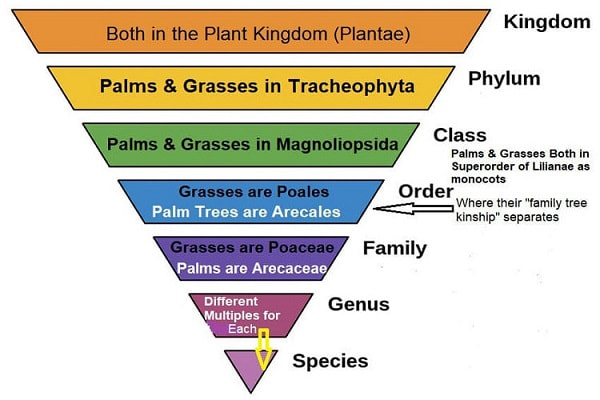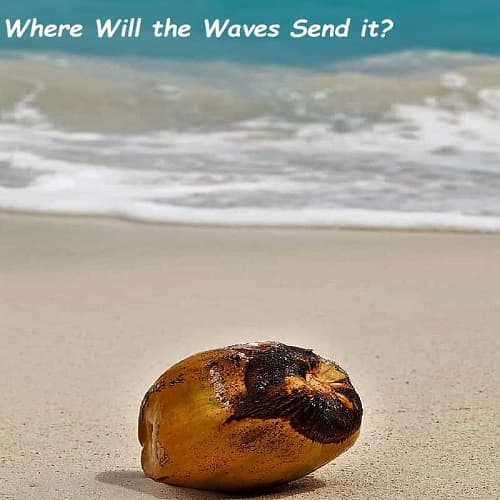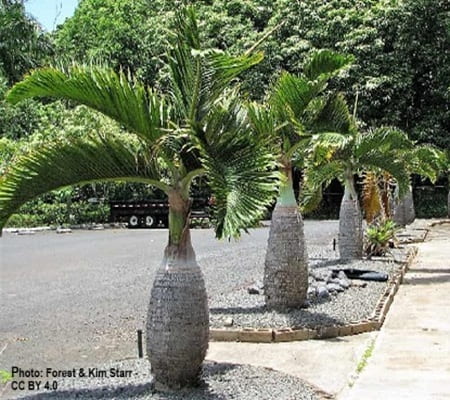- Home
- Interesting Palm Facts
Interesting Facts About Palm Trees -
Unearth 10+ Quirky & Mind-Blowing Truths
As palm specialists, we've got some of the most interesting facts about palm trees.
Since they're definitely interesting plants. When we first started learning more about palms, we were so surprised about some details we learned.
We're bringing them to you - this unique palm tree news. They're quite interesting, fun to know, and wildly strange. Take a look!
What Makes Palm Trees So Interesting?
Palm trees are fascinating because of their unique adaptability.
- They absolutely love tropical climates.
- They also do well in subtropical regions.
- They can even Tolerate Some of the World's Deserts.
- They can sometimes even Survive Snow.
Viewing their tall trunks topped with large, fluttering leaves, people think of relaxation and exotic locales. Their endurance in windy storms is impressive.
 We were in a Cancun resort shelter when Hurricane Wilma began blowing in.
We were in a Cancun resort shelter when Hurricane Wilma began blowing in.PALM FACT - They have a Steel-Like structure.
Palms are often shown bending in hurricane winds. Without breaking!
- Because palms have channel bundles which circulate their nourishment.
- They're often compared to steel rebar. The bundles sit in fibers that can be compared to squishy concrete.
Why Are Palm Trees So Loved Worldwide?
Beyond their beauty & sturdiness, palms provide useful resources in many cultures.
- Like Fruits that are edible products - like coconuts, dates, and many more.
- Oils for industries, beauty products & cooking.
- Parts of Palm Trees are turned into baskets, construction materials such as roofing, and even medicines.
Overall, palm tree exotic allure and benefits make them truly captivating plants. That's why we can gather fun and interesting facts about Cool Palm Trees for you.
Fun Fact #1 – Surprise:
Why Palm Trees Aren’t True Trees - Explained!
Some people ask if palms are actually grass!
A valid question. Palms are not grass - But They Do Have a Relationship to Grass!
So technically palms are not trees, although most palms are tree-like.
 Original image by Annina Breen via CC BY-SA 4.0.
Original image by Annina Breen via CC BY-SA 4.0.Edited by MPT to show relationship of Palms to Grass.
Because of that relationship, trunks of palm trees are different from woody trees. Once A Palm Has Grown its start-up trunk height & width, it won't expand its girth any further.
- As do oaks, maples, etc., by yearly growth ring expansion.
- Yearly growing new, thickening wood around the trunk's outside.
- Palms don't do this: creating yearly growth rings.
 An Inside View
An Inside ViewFun Fact #2 – Palms Are Not Just a One-Species Wonder
Although grouped together as palm trees, there are over 2,500 species.
Trying to think of them all is like a family reunion with 2,500 cousins. But without the bumbling conversations.
Yet still more are being discovered! Sadly, some are endangered & some are extinct. Take a look at just Some of the Species of Palms>
From the Date Palms of the Middle East to the ornamental arecas in home gardens, each species contributes beauty and usefulness.
Fun Fact #3 – Myth-Busting:
How Palm Trees Allegedly Built the Colosseum!
Palm Trees take their place in Mythology, Ancient History, and Traditions.
In cultures around the world, victory, peace, and eternal life are What Palms Symbolize.
In ancient Greece and Rome, game winners and heroes returning from battle were awarded palm branches to mean a triumphant end. Today, palm images are used to communicate feelings of both tranquility and celebration.
Their symbolism produced ancient peace signs (before the peace sign was cool!) and was the original victory emoji - ahead of its time!
 No, the famed Colosseum wasn't really built by palms! It's all concrete & travertine.
No, the famed Colosseum wasn't really built by palms! It's all concrete & travertine.But if it could speak - you'd hear the historic use of palms in its era.
Reference: bbc.co.uk/history/ancient/romans/colosseum_01.shtml
Fun Fact #4 – The World’s Tallest Palm Tree
Did you know that the Quindío wax palm (Ceroxylon quindiuense) can reach up to 200 feet?
That’s taller than most buildings! These giants proudly hold the title of the tallest palm tree species in the world. If a giraffe was visiting, they'd need to look up!
To see them, travel to the Andes Mountains in Colombia.
But if you can't go anytime soon - See These World's Tallest Palms Now - with an amazing true-life horse size comparison, plus a virtual fly-over!
These are the beloved skyscrapers of the palm plant world, with no elevator available!
 Quindío Wax Palms on the valley's hillside.
Quindío Wax Palms on the valley's hillside.Fun Fact #5 – Who Has the Record-Breaking Leaf Size?
The Raphia regalis is a species of raffia palm from Africa.
It boasts the longest leaves of any flowering plant. It's a Massive Palm Tree You Can See Here. Its fronds can reach up to 82 feet long! It's like the Palm World's version of "go big or go home!"
Some say it's the longest plant leaf of all the plant kingdom. But that's not exactly accurate. As some Pacific Ocean kelp produce leaves with a reach of 200 feet! As nonflowering plants, these kelp live offshore in Southern California.
Imagine the size of the front door welcome mat, if you made one from these leaves!
PALM LEAF FACT - The fronds also Help To ID a Palm Tree.
- First you first figure out the Type of Leaf Parts it has. The fronds are the most important initial evaluation.
- But also look at its trunk style. And take it from there.

Fun Fact #6 – Unusual Palm Fronds
That "Leave" You Awe-Struck!
One genus of palm tree, Caryota, has fronds that look like fish tails.
That's where they got their nickname. Their frond structure is unique in the palm world.
The Caryota genus has about 12 species of palms.
Another one of the most unusual palms is Dypsis decaryi.
Called the Triangle Palm because its triangular-shaped crown of fronds creates a striking visual.
A concerning favorite palm for many. As almost all native seeds are gathered for export. Its origin is in a small area of southeastern Madagascar, where it's dwindling.
Now a more common sight, as a Palm in the United States. Not suited to a small garden or cold climates.
 Its triangular shape is truly one of the interesting fact about palm trees.
Its triangular shape is truly one of the interesting fact about palm trees.FACTS ON FRONDS - Many palm species use self-management with the leaves.
- No need to worry about Pruning the Palms. Like with Washingtonia robusta (Mexican Fan Palm).
- Those with a Crown Shaft also take care of their own fronds.
Strange Palm Fact #7 – They Can ‘Swim’ or 'Walk'
(Sort Of)
This interesting fact about palm trees shows how they're the original globe-trotters before passports were invented!
Imagine being on a tropical shore. You notice a coconut palm has dropped its fruit into the ocean. Can you imagin where it will end up?
Coconut palms (Cocos nucifera) are famous for their drifting seeds. Coconuts are the seeds that are the Fruit of a Palm. They get carried away by currents and even human travelers. Any one of them has the chance to float across vast areas of oceans. Until they finally settle on a new shore. And then begin sprouting.
This natural dispersal was one reason why coconuts spread across various tropical regions. See how the Coconut Tree and a Palm Tree relates to each other.
Coconuts probably have more exciting travel stories than any of our globe-trotting friends!

The Most Unusual Walking Palm Tree: Whoa!
Socratea exorrhiza is nicknamed the Walking Palm.
Can exotic palms like that really walk? It's what everybody asks! Will they stay in good condition if they go walking?
The first time you see it you'll wonder about its unique adaptation. You'll see the strange cone-shaped staking around the bottom of all young palm trunks. These are a form of roots. Called stilt roots, prop roots or aerial roots.
They mainly help support the trunk. They're also pretty spiny. Many people think these surrounding roots look like rotating legs. About to start walking the palm off to a nicer spot.
We think you're wondering if it really moves! In a sense, yes!
- According to Biologists this palm slowly “walks” over time.
- It grows new stilt roots at one side. Then lets go of the roots on the opposite side.
- A young palm does this to save being smothered by large forest growth. Trying to reach a bit more sunshine.
Strange Palm Fact #8 – Trunks Resembling Other Stuff
Called the Bottle Palm. Because these strange palm trees have swollen trunk bottoms, resembling a bottle.
Among exotic palms the Hyophorbe lagenicaulis is a favorite palm, because of its unique look. Very distinctive, with an eye-catching appearance.
We think it looks as if it grew its own palm container! We have a fake one in our home, for indoor decor. To make-do while waiting to try to buy one for our landscape.
Just gorgeous!
 Bottle Palms growing in Hawaii.
Bottle Palms growing in Hawaii.The Canary Island Date Palm is sometimes trimmed to make the trunk appear like a pineapple.
Then people call it the "Pineapple Palm." Some think they instead look like that retro bathroom gear: Shaving Brushes.
But either way, even though it's an interesting fact about palm trees, we feel it's a sad case. As we always say: "It's a living plant - a palm tree, not a sculpture."
 More like a pineapple, or shaving brush?
More like a pineapple, or shaving brush?Strange Palm Fact #9 – Palm Trees Are
Older Than the Dinosaurs
These plants were hanging out with dinosaurs before it was cool!
Palm trees are survivors from the pre-historic era. They existed over 80 million years ago.
When palms first appeared, rocks were still considered cutting-edge technology. 😮 These ancient plants have adapted over time to do fine in varied environments. Even with that, some numbers of species are now endangered. Mainly because of habitat loss.
You can now find them anywhere from tropical beaches to urban landscapes to colder climates! By cultivating them in Botanical Gardens and home landscapes, especially those rare palms, we help to maintain the species.
 Imagine the stories these beasts could tell!
Imagine the stories these beasts could tell!PALM LOCATION FACT - Where palms live is more places than expected.
- About the only place they're not found is in the artic.
- They're throughout the tropics & subtropics.
- Yet Places Palms Can Grow are in Temperate Zones too!
LONG LIFE FACT - Some palm species can live as long as 150 years or more! The Date Palm is one species known for its long life, even up to 200 years.
Strange and Sad Fact #10 – Are Palm Trees Endangered? What You Should Know
This interesting fact about palm trees was published by the BBC - Quoting a Study.
Related to what we mentioned in Fact #9, that study found over half of all palm species are threatened with extinction. Most of them because of habitat loss from agriculture and urbanization.
It's alarming because as you see here, palms are unique. Plus they're important to human livelihoods, providing food, materials & tourism.
Their survival depends on urgent conservation efforts to protect ecosystems. Targeted action has begun to safeguard endangered palm species.
If you wish to support the effort for helping palms, See The Information Here>
FAQs of Interesting Facts About Palm Trees
Is palm oil good or bad?
Is palm oil good or bad?
We normally don't think of palms causing havoc for ecosystems.
But this interesting fact about palm trees shows they can be invasive! Notorious for this are African Oil Palms. Scientifically: Elaeis guineensis. As a large tree, it blocks out native palms & other tropical plants, disrupting natural habitats.
What doesn't help is commercial palm oil industries using slash & burn methods to enable cultivation. That's led to massive deforestation. Causing habitat loss for native plants & animals.
The palm oil is sourced from the fruit of the oil palm.
A palm oil powerhouse fact is how it's a major agricultural commodity used in food, cosmetics, and industrial products. It's an ingredient that seems to sneak into almost everything like a ninja!
It represents the "It's Complicated" relationship status in the world of products! Because Palm Oil is More Controversial than pineapple on pizza! Since it contributes to habitat destruction.
Many environmental advocates promote the idea of not using products with palm oil. Now we know why! If you find it in a product you have or will buy, why not investigate if it was obtained from sustainably produced palm oil.
Then you'll be helping to protect wildlife habitats and the environment.
Can You Eat Palm Heart?
Can You Eat Palm Heart?
Yes, indeed!
The heart of palm is harvested from the inner core of certain palm species. It becomes nature's ultimate canned delicacy!
It's used and enjoyed in salad recipes and other gourmet dishes. It's ivory colored, and tasty. But not only that, it’s also packed with nutrients.
PALM FOOD FACT - More parts of the palm can be used as food. Fruits From Palms are edible in some species. Palm Toddy Wine is made from sap. Many more Parts of a Palm Tree are edible.
Feeling overwhelmed by so many palm trees?
You're not alone. We Understand your headaches! At Mission: Palm Trees you'll find clear answers to questions & Step-By-Step Guidance, from real people. With solutions to help. No puzzling shoptalk. No tiring research. So it's easy & fun for you.
A Few Follow-ups to Interesting Facts About Palm Trees
Here's even more - check out these details about palms.
- Modern biology taxonomists have updated the scientific name of many palms. For improved organization. A better way to represent the various palm tribes, subtribes & subfamilies. Also to include newly discovered Rare Palm Trees.
- An excellent Palm Landscaping Tip is to plant the same species in groups of three. But when choosing them, be sure they're different heights/ages at planting time.
- Otherwise as they grow, their crown tops will argue for space with each other!
Takeaways for Interesting Facts About Palm Trees
We hope you've enjoyed these interesting facts about palm trees.
Palms are such a singular plant, it's intriguing to learn these fun, strange details.
Have any questions about these facts? You can Give Us Feedback & Ask! We'd love to hear from you.
There are definitely many interesting facts about palm trees to mull over!




